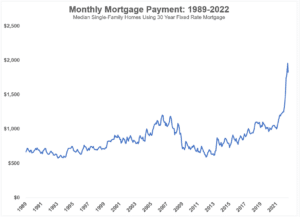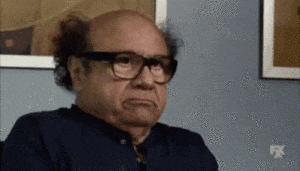Last week I wanted to do a quick check-in on the state of the stock market. This week I figured I’d continue with this state-of-the-economy check-in and briefly hit on the housing market.
Anecdotally, the housing market seems to be garnering more attention than the stock market lately. Despite the stock market falling into a bear market this year, I’ve had far more conversations about what is going on with housing than what’s happening with stocks.
There could be many reasons for this. I would guess a big one is that home prices affect more people than stock prices given that more people own homes than own stocks. About two-thirds of Americans own homes.
Another could be what my friend told me the other day which is that for some reason as he’s gotten older and had kids, he’s started to look online every week at local house listings. He’s not in the market to buy anytime soon—he simply enjoys browsing.
So maybe it’s just something that happens as you get older. You start to care a lot about the greenness of your grass, you get really into grilling and smoking meats, and you keep a meticulous watch on your local housing market.

House prices are still up about 40% from pre-pandemic levels. This isn’t new information. Everyone knows that housing has gotten a lot more expensive over the past couple of years. At the peak of the boom towards the end of last year, house prices had increased by over 20% in the span of a year, which was the largest one-year spike in the U.S. on record.
What is a new development in recent months is mortgage rates have skyrocketed. In the short span of a year, mortgage rates have moved from 3% to more than 6%.
People were fine buying expensive houses when rates were at 3%, but now that they’ve more than doubled it’s causing a real affordability issue. Here’s the situation:
• 2 years ago: the 30-year mortgage rate was 2.87% and the average new home price was $405,000.
• Today: the 30-year mortgage rate is 6.02% and the average new home price is $547,000.
The result is an additional $28,000 needed for a down payment (assuming 20% down) and a 96% increase in monthly mortgage payments. And this comparison doesn’t include property taxes, insurance, repairs/maintenance, etc.

This is some of the worst levels of unaffordability we’ve seen since the late 1980s and it happened in the blink of an eye.

Looking at data like the chart above, many are worried about a housing market crash and what it may mean for the economy. The Great Recession of 2008 still looms large on people’s minds.
Yes, the unsustainable growth in house prices of the past few years is starting to reverse. And you can be sure that financial media outlets are anxiously waiting to take advantage with must-click, scary headlines like the following:

The headline is accurate, but the actual percentage declines paint a much more mild picture than the headline would suggest. Home prices fell 1.05% in July and 0.98% in August. With prices up over 12% year-over-year, I would describe these drops as the housing market normalizing rather than “crashing.”
A big factor in the housing market is supply and demand. While demand for homes may wane with high mortgage rates, supply may also decrease significantly because people can’t afford to move into a new home so there will be fewer houses for sale. Inventory still hasn’t caught up to demand.

With such high rates, it feels like prices have to cool off, but housing prices can decrease without there being a 2008-like crash. Aside from the Great Recession, the last major housing crash was during World War II. The housing market crashes far less than people think. And when prices do go down, they’re fairly mild like we saw in July and August.
The drop in housing prices right now is more about discouraged buyers and affordability challenges. The last crash was more about egregious mortgages and foreclosures.
John Paulson made $20 billion shorting the housing market in 2008. He recently made some remarks about the current housing market compared to then:
“Well the financial market, the banking system and the housing market are much different today than in ‘06 and ‘07. The underlying quality of the mortgages today is far superior. You don’t even have any subprime mortgages in the market … And the FICO scores are very, very high. The average is like 760. And the subprime, they were averaging 580-620 with no down payment. So in that period, there was no down payments, no credit checks, very high leverage. And it’s just the opposite of what’s happening today. So you don’t have the degree of poor credit quality in mortgages that you did at that time.”
In the third quarter of 2007, 26% of mortgage origination went to people with credit scores below 660. That number has averaged 5% over the last eight quarters.
I have no idea where the housing market goes from here, especially with how crazy interest rates have been over the past year. But people who are already in a home are more than fine. Loans aren’t going bad and banks aren’t losing money. It’s a tough environment, but it doesn’t mirror 2008. We’ll just have to see what happens from here and play the cards we’re dealt.
Thanks for reading!

